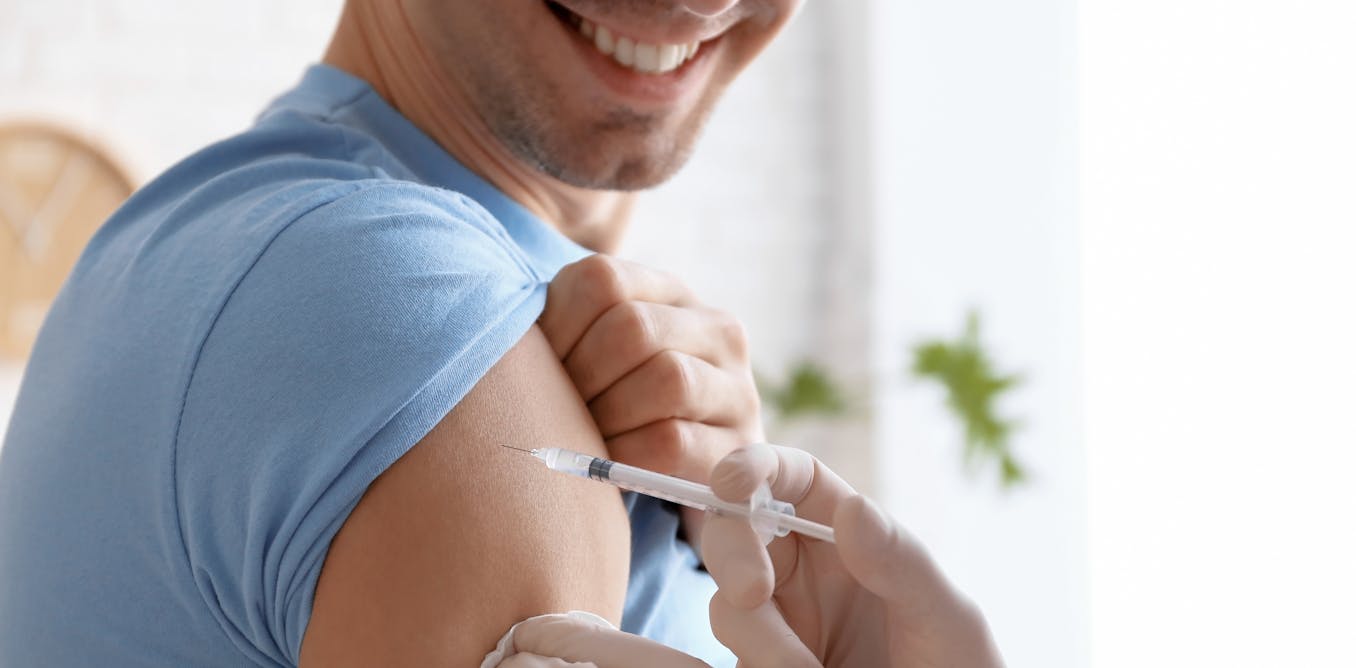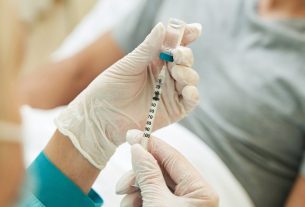The UK has just introduced the world’s first national programme offering a vaccine to help protect against gonorrhoea. This coincides with increasing rates of sexually transmitted infections (STIs) including antibiotic-resistant strains of Neisseria gonorrhoeae, particularly among gay, bisexual and other men who have sex with men.
The vaccine being offered was not originally designed for gonorrhoea. It is the meningococcal B (MenB) vaccine, developed to protect against Neisseria meningitidis – the bacteria which cause meningitis.
These two bacteria are closely related and share several similar surface proteins. As a result, the immune response generated by the MenB vaccine also offers provides partial protection against gonorrhoea.
While the vaccine is not 100% effective, studies suggest it can reduce the risk of infection by a third. Given the emergence of antibiotic-resistant “super gonorrhoea” this is a valuable addition to our sexual health toolkit.
Condoms are the mainstay of STI prevention, and have been for decades. They are inexpensive, easy to use and remain the only single method that protects against both HIV and most other STIs.
Despite their effectiveness, many people do not use condoms every time they have sex. Some find they reduce sensation or pleasure; others see condomless sex as a sign of trust in a relationship. Condoms might not be on hand when sex is spontaneous, while alcohol and drug use may lower inhibitions and increase impulsivity.
Since the introduction of HIV pre-exposure prophylaxis (PrEP) attitudes have also shifted. Some people now perceive other STIs as inconvenient but easily treated, particularly younger generations whose school-based sex education may have focused more on pregnancy prevention than on STI transmission.
But “condomless sex” need not mean “entirely unprotected” sex. In addition to condoms, biomedical advances are giving us more ways to prevent infection – many of which rely on acting before particular bacteria or viruses take hold. In public health, two of the most effective examples of this are vaccination and prophylaxis (treatment given or action taken to prevent disease).
Vaccination
Vaccines work by training the immune system to recognise and fight specific infections. They do this by introducing harmless fragments of a virus or bacterium, which prompt the body to produce antibodies and memory cells. If the body later encounters the real pathogen, the immune system can react rapidly and in a much more targeted way, preventing illness entirely or at least reducing its severity.
Vaccination already plays an important role in sexual health. Alongside the newly introduced gonorrhoea vaccine, the HPV (human papillomavirus) vaccine protects against genital warts and reduces the risk of several cancers, including cervical and anal cancer. Hepatitis A and B vaccines defend against viruses that can cause serious, and sometimes life-threatening, liver disease. The mpox vaccine is also available for people considered at higher risk.
These vaccines represent a useful preventative tool in the modern sexual health toolkit – complementing condoms, antiviral prophylaxis and other preventive strategies to give people another layer of protection.
Prophylaxis
In sexual health, one of the clearest examples of prevention in action is HIV prophylaxis. Pre-Exposure Prophylaxis (PrEP) involves taking antiviral medication so that, if exposure to the HIV virus occurs, it cannot establish an infection. Some people take PrEP daily, while others use an “on demand” regimen around the time they have sex. Under the guidance of a sexual health professional, PrEP is a safe and highly effective option for preventing HIV infection.
Post-Exposure Porphylaxis (PEP) works in a similar way but is taken after a possible exposure. It’s an emergency option: a month-long course of antiviral medication that should be started as soon as possible (and no later than 72 hours after sex) to be effective.
Researchers are now exploring similar approaches for bacterial STIs. One promising example is DoxyPEP, where a single dose of the antibiotic doxycycline is taken after condomless sex. Early evidence shows it can significantly reduce the risk of syphilis and chlamydia, and to a lesser extent, gonorrhoea.
Why condoms still matter
These biomedical tools are changing the sexual health landscape. While there is no substitute for the comprehensive protection that condoms offer, more options mean greater control.
As threats continue to evolve, so too must our strategies to address them. The introduction of the gonorrhoea vaccination programme – the first of its kind – is a powerful example of innovation in practice. It demonstrates how progress can be achieved not only through new discoveries, but in finding new uses for existing tools.



